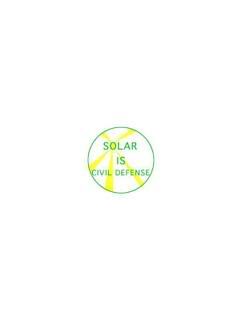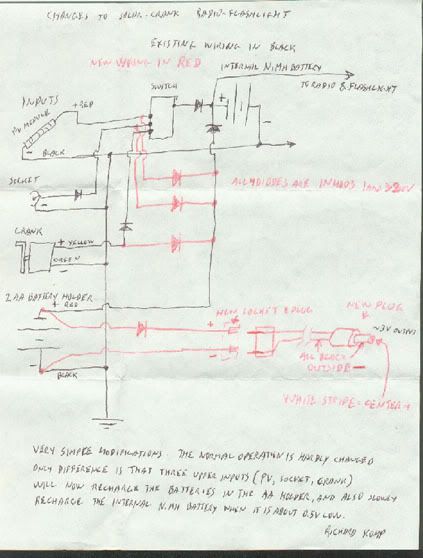"Energy Critical Elements"
Wednesday, January 16, 2013
1:30p–2:30p
MIT, Building 6-120, 77 Massachusetts Avenue, Cambridge
Speaker: Robert Jaffe - Morningstar Professor of Science, Department of Physics
I will then turn to our recent report on "Energy Critical Elements: Securing Materials for Emerging Technologies", describing rare elements' roles in emerging technologies, constraints on availability, and government actions to avoid disruptive shortages.
Web site: http://student.mit.edu/searchiap/iap-9289af8f3b3c7818013b3d15ee340001.html
Open to: the general public
Sponsor(s): Physics IAP
For more information, contact: Denise Wahkor
617-253-4855
DENISEW@MIT.EDU
American Physical Society (APS) and Materials Research Society Energy (MRS) Critical Elements report:
http://www.aps.org/policy/reports/popa-reports/loader.cfm?csModule=security/getfile&PageID=236337
Since the Chinese have recently monopolized rare earths production, energy critical elements have become a serious economic and policy concern. The US has responded by engaging in rare earths mining and now produces 20% of some of them. Australia is also beginning rare earths mining. If the usual model of capitalistic boom and bust, which we've experienced with the silicon market over the last decade, is any indication, there will be an over-investment in rare earths elements (REE) and then a subsequent bust as the market settles. However, the fact remains that the US is 90% dependent on imports for critical energy materials.
Some of these energy critical elements include:
Gallium, germanium, indium, selenium, silver, and tellurium, all employed in advanced photovoltaic solar cells, especially thin-film photovoltaics.
Dysprosium, neodymium, praseodymium, samarium (all REEs), and cobalt, used in high-strength permanent magnets for many energy-related applications, such as wind turbines and hybrid automobiles.
Most REEs, valued for their unusual magnetic and/or optical properties. Examples include gadolinium for its unusual paramagnetic qualities and europium and terbium for their role in managing the color of fluorescent lighting. Yttrium, another REE, is an important ingredient in energy-efficient solid-state lighting.
Lithium and lanthanum, used in high performance batteries.
Helium, required in cryogenics, energy research, advanced nuclear reactor designs,
and manufacturing in the energy sector.
Platinum, palladium, and other PGEs, used as catalysts in fuel cells that may find wide applications in transportation. Cerium, a REE, is also used as an auto-emissions catalyst.
Rhenium, used in high performance alloys for advanced turbines.
Tellurium is one fourth as abundant as gold. It takes 80 tons of Te to get a gW of peak power in thin film pv solar according to Jaffe. (However, thin film pv is not the most efficient pv currently available and I doubt that anyone would consider deploying large-scale thin film pv installations.) The estimated world production of tellurium is 500 tons per year.
Neodymium and praseodymium are used in wind turbines and are about one tenth of world rare earth production.
Terbium production is about 450 tons per year.
Rhenium is perhaps the rarest material with an annual world production between 40 and 50 tons per year.
In the next few years the US will sell off its helium stockpile. Helium is a by-product of natural gas, at 4 parts per billion, but only some natural gas deposits include it and those have not been adequately mapped.
10% of world's silver production now goes into silicon pv contacts.
Almost all of these materials are by-products of other materials and their prices are artificial because of that:
Rhenium with molybdenum
Tellurium with copper (also zinc and lead)
Indium and germanium with zinc
Gallium with aluminum
Thorium is frequently present in rare earth deposits as well but usually disposed of because it is not economic to capture it. As are many other useful materials. Witness the flaring of gas from the fracking operations in North Dakota.
In addition, as by-materials, they depend upon the main ores and the processes used to produce them. For instance, copper can be processed in such a way that tellurium is lost.
The report recommends some changes in policy:
a "coordinated response" which is beginning as the President's Office of Science and Technology Policy (OSTP) has established a task force on critical and strategic mineral supply chains led by Cyrus Wadia; the US DOE has selected the Ames Laboratory to house the Critical Materials Institute; and, although the Bingaman-Murkowski amendment of the energy critical materials bill died in the last Congress, it will be re-introduced in the next Congress with the sponsorship of Ron Wyden and Barbara Murkowski since Jeff Bingaman has retired from the Senate;
"comprehensive, reliable, and up-to-date information on all aspects of the life cycle of ECEs as present information on many of these materials is very uneven";
"research and development to both expand availability and reduce dependency" on such materials and to train scientists and technologists in the field especially since it takes 5-10 years for research and develop substitutes and another 5-15 years to bring new sources online;
and "recycling" as many of these materials are not yet recycled or even tracked through the materials flows of our industrial and commercial systems.
Thomas Graedl of Yale is one scientist working on recycling and materials flows:
"The historical reservoir for the materials used by our technological society has been virgin stocks (ore bodies, mineral deposits, and the like). For a variety of reasons, those stocks may become inadequate or unavailable at some times or places in the future, and the loss of resources by dissipation or discard is often problematic from an environmental standpoint. These issues can be addressed by developing cycles for the stocks and flows of materials of interest, particularly if the cycles are temporally and spatially resolved.
"I, along with my colleagues, have characterized regional and global cycles, current and historic, for copper and zinc, determining the stocks available in different types of reservoirs and the flows among the reservoirs. GIS techniques are used to display some of the results in spatially-gridded form. The work provides a new basis for assessments of resources sustainability, environmental impacts over time, and related policy initiatives."
source: http://environment.yale.edu/profile/graedel/research
Europe is actually doing some recycling now. EU Rare Earths Recycling study: http://reinhardbuetikofer.eu/wp-content/uploads/2011/01/Rare-earths-study_Oeko-Institut_Jan-2011.pdf
One company is Solvay
http://www.solvay.com/EN/NewsPress/20120927_Coleopterre.aspx
Of course, there is an industrial association and lobbying group, RARE, the Association for Rare Earth (http://www.rareearthassociation.org/)
RARE is the premier international advocate and opinion leader for rare earth industry suppliers, manufacturers, and retailers dedicated to improving the future through rare earth innovation.
One interesting parallel track Robert Jaffe didn't mention is the Center for Inverse Design
(http://www.centerforinversedesign.org/) which is doing a systematic examination of the periodic table for new and more efficient properties, in some cases using genetic algorithms. Carla Gomes of Cornell is also doing some interesting work on the computational analysis of new materials. After hearing talks on the Center and then, a few weeks later, Dr Gomes, I alerted her to the Center's work. I have emailed Dr Jaffe about both and hope that something useful can come from making such connections.
In addition, there's the currently outlandish possibility of nuclear transmutation of elements. Here is a presentation by Yasuhiro Iwamura of Mitsubishi Heavy Industries on transmutation reactions delivered at the American Nuclear Society on November 12, 2012:
http://youtu.be/VefCEaLAkRw
It is always good to remember
There are more things in heaven and earth, Horatio,
Than are dreamt of in your philosophy
But I wouldn't hold my breath in anticipation of such (scientific) miracles.




